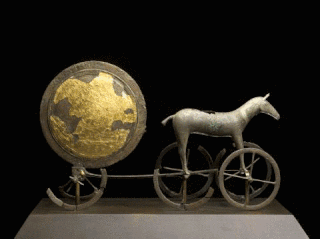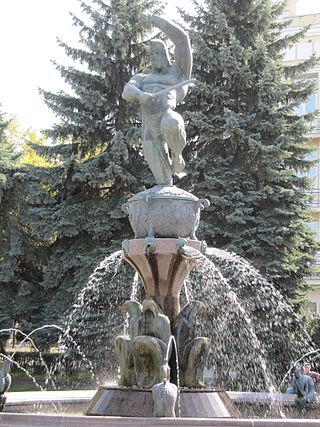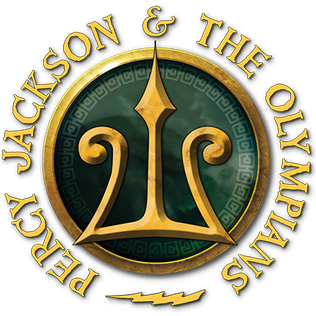
In Greek mythology, Prometheus is a god of fire. Prometheus is best known for defying the Olympian gods by taking fire from them and giving it to humanity in the form of technology, knowledge and, more generally, civilization.

The Caucasus or Caucasia, is a region spanning Eastern Europe and Western Asia. It is situated between the Black Sea and the Caspian Sea, mainly comprising Armenia, Azerbaijan, Georgia, and parts of Southern Russia. The Caucasus Mountains, including the Greater Caucasus range, have conventionally been considered as a natural barrier between Europe and Asia, bisecting the Eurasian landmass.

Mount Kazbek or Mount Kazbegi is a dormant stratovolcano and one of the major mountains of the Caucasus, located in Georgia, just south of the border with Russia.
The Nart sagas are a series of tales originating from the North Caucasus. They form much of the basic mythology of the ethnic groups in the area, including Abazin, Abkhaz, Circassian, Ossetian, Karachay-Balkar, and to some extent Chechen-Ingush folklore.
The history of Chechnya may refer to the history of the Chechens, of their land Chechnya, or of the land of Ichkeria.

Proto-Indo-European mythology is the body of myths and deities associated with the Proto-Indo-Europeans, speakers of the hypothesized Proto-Indo-European language. Although the mythological motifs are not directly attested – since Proto-Indo-European speakers lived in preliterate societies – scholars of comparative mythology have reconstructed details from inherited similarities in mythological concepts found in Indo-European languages, based on the assumption that parts of the Proto-Indo-Europeans' original belief systems survived in the daughter traditions.

The Caucasian languages comprise a large and extremely varied array of languages spoken by more than ten million people in and around the Caucasus Mountains, which lie between the Black Sea and the Caspian Sea.
The Chechens, historically also known as Kisti and Durdzuks, are a Northeast Caucasian ethnic group of the Nakh peoples native to the North Caucasus. They are the largest ethnic group in the region and refer to themselves as Nokhchiy. The vast majority of Chechens are Muslims and live in Chechnya, an autonomous republic within the Russian Federation.

Sosruko, Sosruquo, or Sosriqwa, Soslan is a central character in many cycles of the Nart sagas of the North Caucasus.

Satanaya is a mythological figure who appears in many cycles of the Nart sagas of the North Caucasus.
Tlepsh is a mythological figure who appears in some cycles of the Nart sagas of the Caucasus, in which his Ossetian counterpart is the smith Kurdalægon. Tlepsh's name is a borrowing from Indo-European languages into Circassian, cognate with Ancient Greek χάλυψ (khálups) borrowed into Latin as chalybs - 'iron' - Tlepsh is thus the embodiment of the metal with which he works.

The Hatuqway are one of the twelve major Circassian tribes, representing one of the twelve stars on the green-and-gold Circassian flag. They were known for their art of war as a warrior tribe. After the Russo-Circassian War, their presence in the Caucasus was destroyed during the Circassian genocide, and their number was significantly decreased and today they exist only in small communities in various diasporas, and their names are not mentioned anymore in Circassian dialectology.
Batraz, Batradz, Batyradz, or Pataraz is a central character in the North Caucasian myths known as the Nart sagas. The Narts were the central figures of the folklore of peoples of the North Caucasus.
The Dvals were a ethnographic group of Georgians. Their lands lying on both sides of the central Greater Caucasus mountains, somewhere between the Darial and Mamison gorges. This historic territory mostly covers the north of Kartli, parts of the Racha and Khevi regions in Georgia and south of Ossetia in Russia.

Percy Jackson & the Olympians is a fantasy novel series by American author Rick Riordan. The first book series in his Camp Half-Blood Chronicles, the novels are set in a world with the Greek gods in the 21st century. The series follows the protagonist, Percy Jackson, a young demigod who must prevent the Titans, led by Kronos, from destroying the world.

The Nakh peoples are a group of North Caucasian peoples identified by their use of the Nakh languages and other cultural similarities. These are chiefly the ethnic Chechen, Ingush and Bats peoples of the North Caucasus, including closely related minor or historical groups.
The Vainakh peoples of the North Caucasus were Islamised comparatively late, during the early modern period, and Amjad Jaimoukha (2005) proposes to reconstruct some of the elements of their pre-Islamic religion and mythology, including traces of ancestor worship and funerary cults. The Nakh peoples, like many other peoples of the North Caucasus such as Circassians, practised tree worship, and believed that trees were the abodes of spirits. Vainakh peoples developed many rituals to serve particular kinds of trees. The pear tree held a special place in the faith of Vainakhs.

In Greek mythology, Uranus, sometimes written Ouranos, is the personification of the sky and one of the Greek primordial deities. According to Hesiod, Uranus was the son and husband of Gaia (Earth), with whom he fathered the first generation of Titans. However, no cult addressed directly to Uranus survived into classical times, and Uranus does not appear among the usual themes of Greek painted pottery. Elemental Earth, Sky, and Styx might be joined, however, in solemn invocation in Homeric epic. Uranus is associated with the Roman god Caelus.
During the 13th and 14th centuries, the Mongols launched two long, massive invasions of the territory of modern Chechnya and Ingushetia, which included the lands of Alania in the west, Simsir in the northeast, and the Georgian-allied polity of Durdzuketia in the south. They caused massive destruction and human death for the Durdzuks, but also greatly shaped the people they became afterward. However, this came at great cost to them, and the states they had built were utterly destroyed, as were their previous organized systems. These invasions are among the most significant occurrences in Chechen and Ingush history, and have had long-ranging effects on Chechnya, Ingushetia and their peoples.
Caucasian Neopaganism is a category including movements of modern revival of the autochthonous religions of the indigenous peoples of the North Caucasus. It has been observed by scholar Victor Schnirelmann especially among the Abkhaz and the Circassians.












